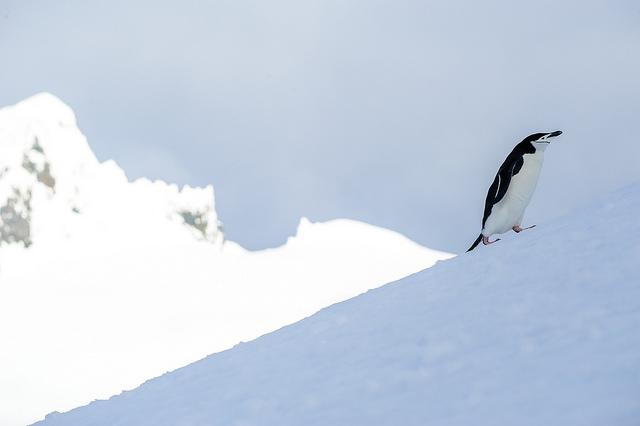Reader response: Looking south…
Posted By Marcus Haward on October 15, 2014 @ 12:15
 [1]
[1]Anthony Press, as head inquirer of the recently released 20 Year Australian Antarctic Strategic Plan [2], provides a useful snapshot of, and context behind, this important document in his contribution [3] to The Strategist.
At its core, the 20 Year Australian Antarctic Strategic Plan emphasises the need to ‘maintain Australian leadership in Antarctica’. It provides clear directions that, in addition to suggesting a reorientation of Australia’s Antarctic program, concentrate on supporting, complementing and extending existing initiatives. The report is cogent yet comprehensive, making 35 recommendations across the scope of Antarctic policy, management, program development, science, logistics and international relations and diplomacy.
Australia needs to act now to ensure that this leadership—achieved after decades of diplomatic efforts and scientific research—doesn’t diminish. In addition to refocusing and reaffirming Australia’s Antarctic interests [4]—and suggesting that those interests be linked to specific government agencies—the report suggests new administrative arrangements to strengthen administration of the Australian Antarctic Territory including vesting the Director of the Australian Antarctic Division (AAD) with the position of Territory Administrator. Anthony Bergin notes [5] the potential for role conflict here, but the current system vests the Director of the AAD with a number of responsibilities under Australian law.
The plan recommends Australia maintain its strong position on Antarctic environmental protection, with a clear statement on the mining prohibition under the Madrid Protocol and the key importance of such protection to any review of the protocol after 2048. The report emphasises the strength of the Antarctic Treaty System’s (ATS) environmental protection regime and rejects calls for World Heritage listing of Antarctica as being counter to Australia’s interests in supporting the ATS regime.
The 20 Year Australian Antarctic Strategic Plan notes the benefits that Australia gains from its active engagement with the ATS and the international collaboration that is part and parcel of that system. A key area addressed in the report is Antarctic science—as noted, the currency of influence within the ATS. It’s also important that science has ‘currency’ and is able to address strategic needs as they emerge from within the ATS. Hence the logic behind the plan’s support for the current ‘hybrid’ system of funding science through the Australian Antarctic Division as well as within external research institutions. The plan calls for more funding for science, yet as important as that is funding models need take account of long lead times for this work and the cost of days at sea conducting marine science—again, an argument for the hybrid approach.
Science is directly linked to logistics and infrastructure support. The plan recommends direct support to the Australian Antarctic program and a modernisation of Antarctic stations. In an interesting insight on potential future research directions and related funding the research station on Macquarie Island—part of the state of Tasmania—should be reviewed as part of that modernisation project, while the report elsewhere notes the importance of priority research on and around the territory of Heard Island and McDonald Islands.
The report calls for the replacement of the icebreaker and marine-science vessel Aurora Australis as well as building on intercontinental air transport, including the extension to Hobart airport to take larger aircraft such as C-17 heavy-lift transports. This latter point links to one of the report’s key areas—seeing Tasmania as an Antarctic gateway, and identifying current issues and options for improved infrastructure in Hobart. The report also recommends that Australia ‘reacquire deep field traverse capacity’ ensuring that it can play a major part in current and planned research in the Australian Antarctic Territory that is well away from the coastal location of Australian permanent stations on the continent.
The 20 Year Australian Antarctic Strategic Plan has the potential to refocus and extend the current Australian Antarctic program. As such, it’s a major and significant milestone in Australian engagement with a region that, in the words of Robert Casey (Australian Foreign Minister at the time of the signing of the Antarctic Treaty), is ‘of close and immediate concern’.
Marcus Haward is with the Institute for Marine and Antarctic Studies at the University of Tasmania. Image courtesy of Flickr user Reeve Jolliffe [6].
Article printed from The Strategist: https://aspistrategist.ru
URL to article: /reader-response-looking-south/
URLs in this post:
[1] Image: https://aspistrategist.ru/wp-content/uploads/2014/10/11327953214_73289856c8_z.jpg
[2] 20 Year Australian Antarctic Strategic Plan: http://20yearplan.antarctica.gov.au/final-report
[3] contribution: https://aspistrategist.ru/looking-south-australias-strategic-antarctic-interests-in-the-21st-century/
[4] Antarctic interests: https://aspistrategist.ru/cold-calculations-a-new-aspi-report/
[5] notes: https://www.aspistrategist.ru/publications/opinion-pieces/funds-needed-to-back-australian-strategy-for-antarctic-cold-rush/Funds-needed-to-back-Australian-strategy-for-Antarctic-cold-rush.pdf
[6] Reeve Jolliffe: https://www.flickr.com/photos/reevej/11327953214
Click here to print.